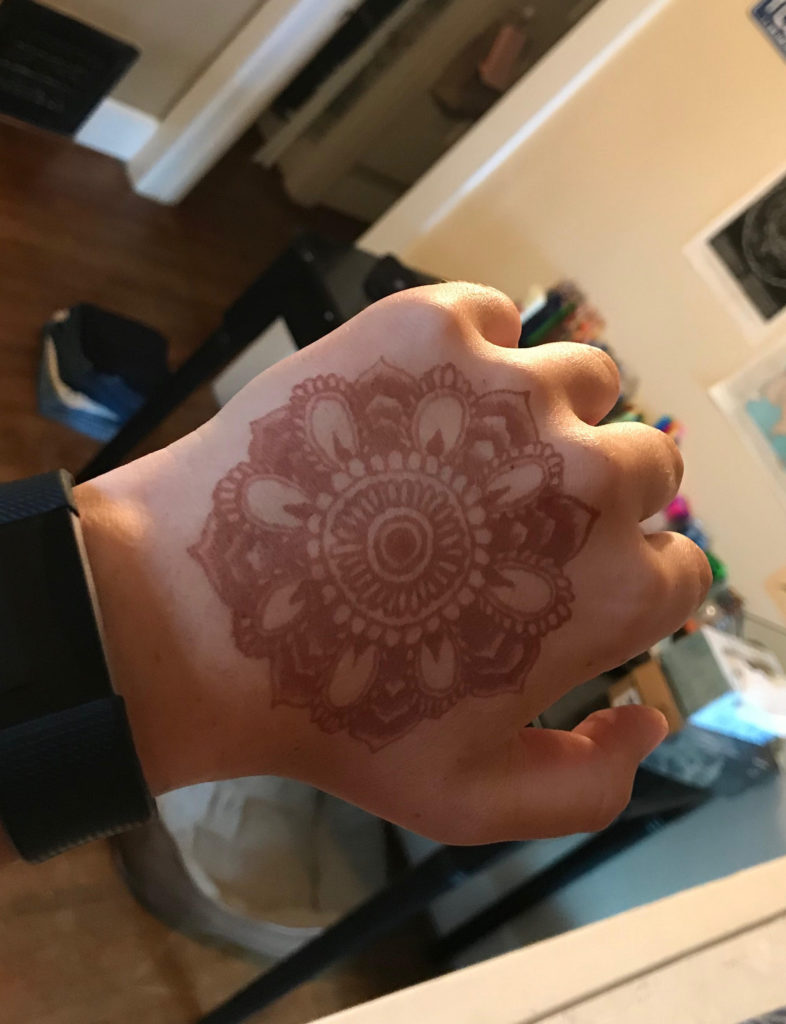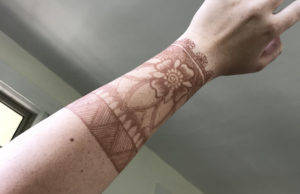Students embrace henna art with traditional designs
 The art of Mehndi (Henna) is a cultured practice in India, Africa and the Middle East. The practice of Mehndi has been dated all the way back to the time of Cleopatra.
The art of Mehndi (Henna) is a cultured practice in India, Africa and the Middle East. The practice of Mehndi has been dated all the way back to the time of Cleopatra.
Junior Noor Afzal is a Pakistani American who has been around henna since she was a little girl.
“I guess I started when I was a little kid if you count making lopsided flowers on my mom’s hands, but I didn’t really get into it until the past couple of years. I do henna because I grew up around lots of henna. I would always get it done as a kid and thought it’d be fun to do on someone else,” Afzal said.
Henna’s artistic features has caught the eye of creative individuals, but to Afzal it means a lot more than just the colors and designs.
“It is a cultural thing that is used for events such as celebrations and weddings in Pakistan and other places. My favorite thing about henna is the smell. When I was younger I used to hate the smell, but now I love it,” Afzal said.
Although the art of henna is a cultured practice, it has spread to a wide range of individuals just for artistic purposes.
Senior Abigail Keiser has also experimented with henna and said she enjoys the opportunity to embrace her artistic side.
“I like to do anything artsy or creative, and being introduced to henna was fun because it was art that would come along with me without the permanence of a tattoo. I learned to do henna by spending time with my cousins. They have an Indian grocery store where they live, and a tube of henna paste is around $3, so it’s a fun and cheap activity,” Keiser said.
Keiser doesn’t perform henna for any cultural purposes but understands the idea behind henna and where it has originated.
“I know in ancient Egypt and modern day India, henna was and is used for religious services, most commonly weddings. To my understanding, the henna was a symbol of good luck for a bride,” Keiser said.
Although Keiser’s henna designs don’t mean anything to her culturally, she said she likes the idea of being able to create an original design and forget that it was even there. Then, as that fades she can create a completely different design in the same area.
“I think some tattoos are cool, but the permanence of it is a little intimidating, so learning to do henna was a fun alternative because each design only lasts a couple weeks max. My favorite part about henna is that there are unlimited options. I can make intricate designs, or I can put a meme on my arm. One of my personal favorites is the slogan ‘No Ragrets.’ Funny, but temporary,” Keiser said.
Keiser is one of many to experiment with henna for non-cultural purposes. She helps people choose whether they want to make a skin changing decision or not.
“I’ve gotten several requests to do a henna design of a tattoo that someone is interested in, but isn’t 100 percent sure they will want it on them 24/7. I think it’s fun that I can help them decide on whether or not it’s a fun temporary tattoo or a design that will stay with them forever,” Keiser said.


Examples of senior Abigail Keiser’s henna work.







You must be logged in to post a comment Login